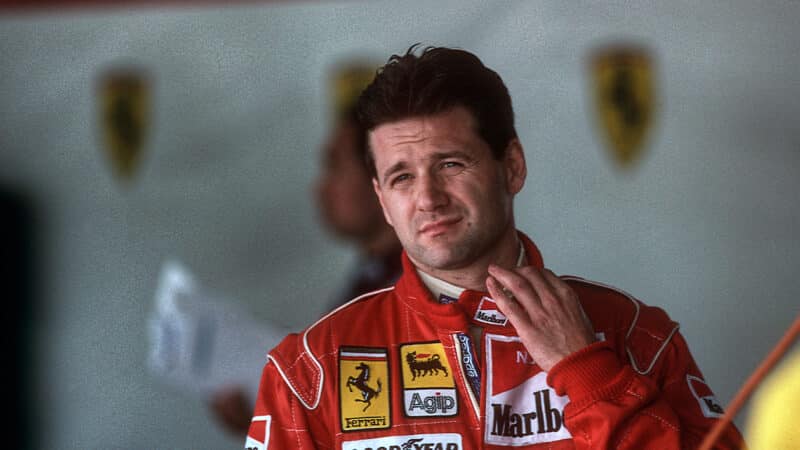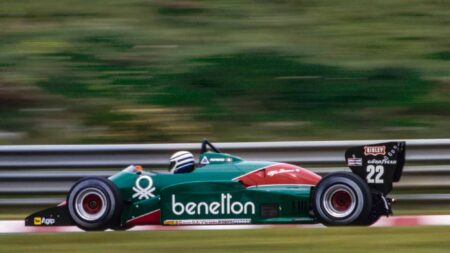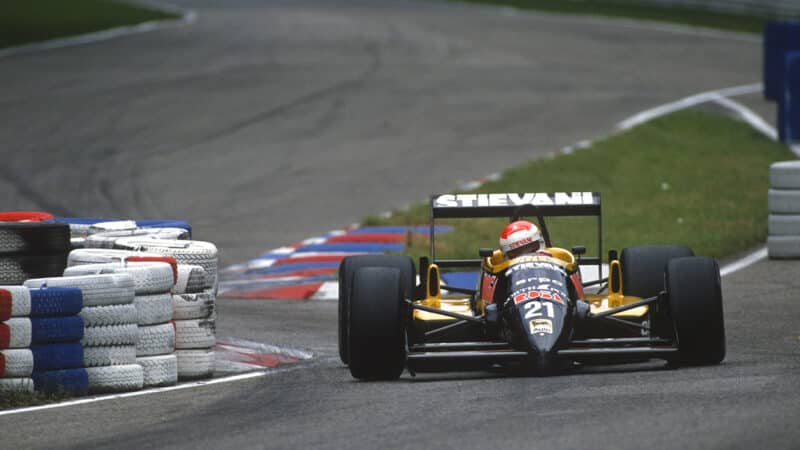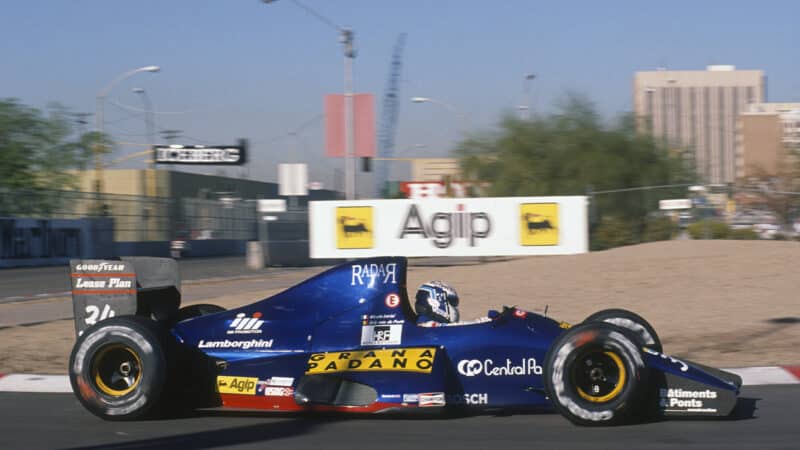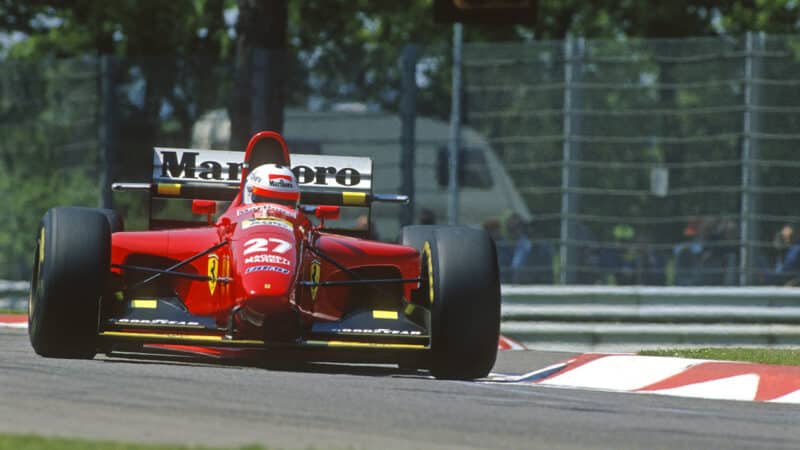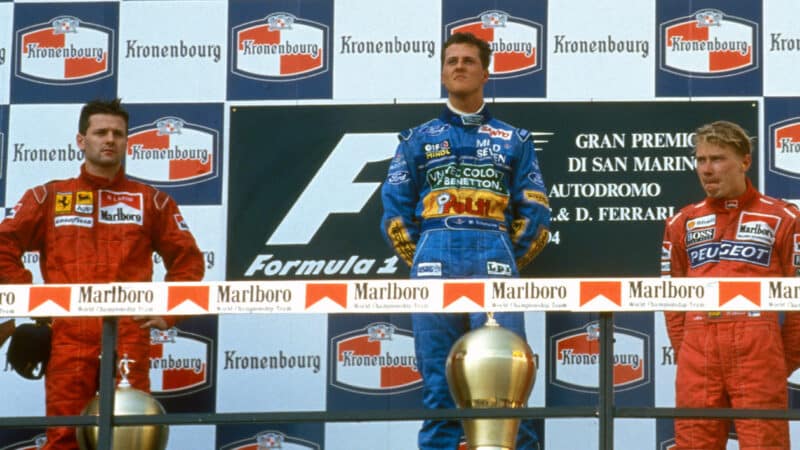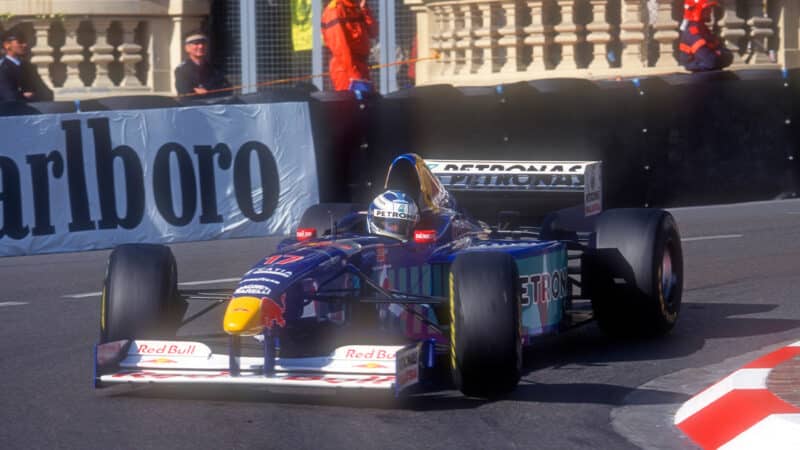Fisichella and Trulli we know about. They were talented and successful, and they were race winners in F1. Some of the other 22 Italians who raced in F1 in the 1980s and 1990s were also talented, but successful by and large they were not. One of them provides an interesting case in point. Today, Tuesday March 19, is his 60th birthday.
Nicola Larini was born in Camaiore, Tuscany, and he started his racing career promisingly. After karting he did Formula Italia and Formula Abarth, Italian single-seater series both, and he showed well in them. He then moved up to Italian Formula 3, attracting the right kind of attention in 1985 and winning the championship in 1986 in a Coloni-run Dallara. In truth, his F3 success had more to do with the driver (himself) and the car (a Dallara) than with the team (Coloni). Nonetheless, he tried to make his F1 debut in a Coloni FC-187 at Monza in 1987, but neither the team nor the car was up to it. He failed to qualify, more than 12 seconds in arrears of Nelson Piquet’s pole time for Williams. He skipped the next grand prix, Estoril, but he tried again at Jerez. This time his best quali effort was ‘only’ 8.5sec slower than Piquet’s pole lap, but at least he had got himself into the race and would therefore make his — and the team’s — F1 grand prix debut. He was the first retirement, however, stopped by suspension failure after just eight laps. After that, Coloni made 80 further attempts to qualify for grands prix… and succeeded just 13 times.
In 1988 and 1989 Larini raced in F1 for Osella – except, again, all too often he did not. In the first of those years he campaigned the risibly but all too appropriately named Osella FA1L. Of the 16 grands prix he entered, he qualified for only 10 and saw the chequered flag on race day just three times, his finishing positions a plucky ninth at Monaco, 19th at Silverstone, and 12th at Estoril. Worse was to come. In 1989 he qualified for the season’s first grand prix, at Jacarepagua, but he was disqualified for an illegal start. Thereafter he failed to pre-qualify eight times and failed to finish six of the seven races for which he had managed to qualify.

